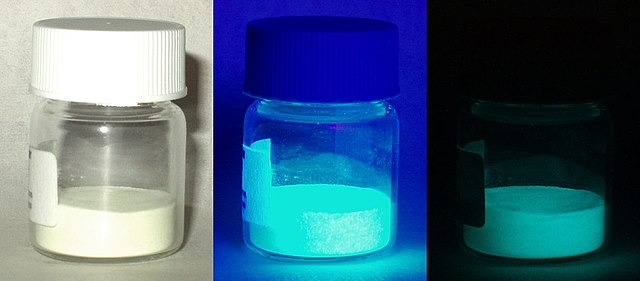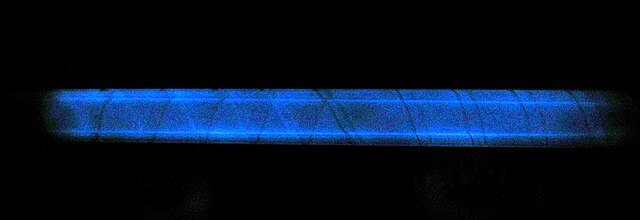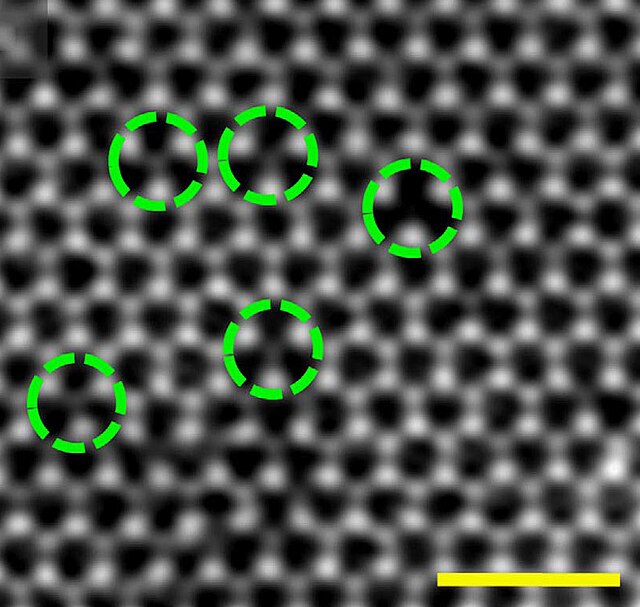Phosphorescence is a type of photoluminescence related to fluorescence. When exposed to light (radiation) of a shorter wavelength, a phosphorescent substance will glow, absorbing the light and reemitting it at a longer wavelength. Unlike fluorescence, a phosphorescent material does not immediately reemit the radiation it absorbs. Instead, a phosphorescent material absorbs some of the radiation energy and reemits it for a much longer time after the radiation source is removed.
Phosphorescent bird figure
Phosphorescent, europium-doped, strontium silicate-aluminate oxide powder under visible light, fluorescing/phosphorescing under long-wave UV light, and persistently phosphorescing in total darkness
An extremely intense pulse of short-wave UV light in a flashtube produced this blue persistent-phosphorescence in the amorphous, fused silica envelope, lasting as long as 20 minutes after the 3.5 microsecond flash.
An electron microscope reveals vacancy defects in a crystalline lattice of molybdenum disulfide. The missing sulfur atoms leave dangling bonds between the molybdenum atoms, creating traps in the empty spaces.
Photoluminescence is light emission from any form of matter after the absorption of photons. It is one of many forms of luminescence and is initiated by photoexcitation, hence the prefix photo-. Following excitation, various relaxation processes typically occur in which other photons are re-radiated. Time periods between absorption and emission may vary: ranging from short femtosecond-regime for emission involving free-carrier plasma in inorganic semiconductors up to milliseconds for phosphoresence processes in molecular systems; and under special circumstances delay of emission may even span to minutes or hours.
Fluorescent solutions under UV light. Absorbed photons are rapidly re-emitted under longer electromagnetic wavelengths.





